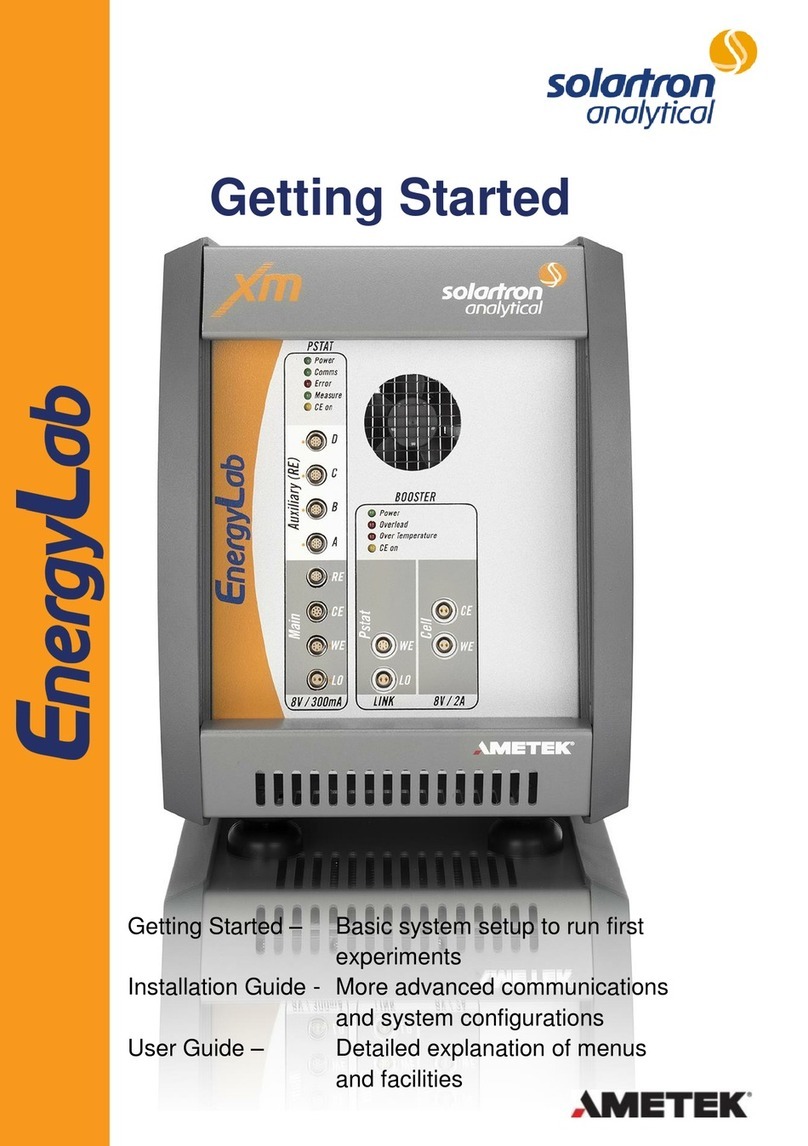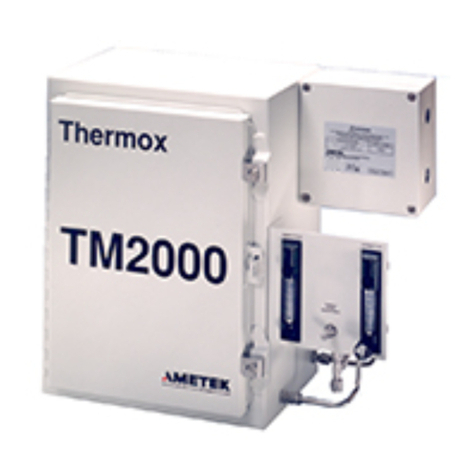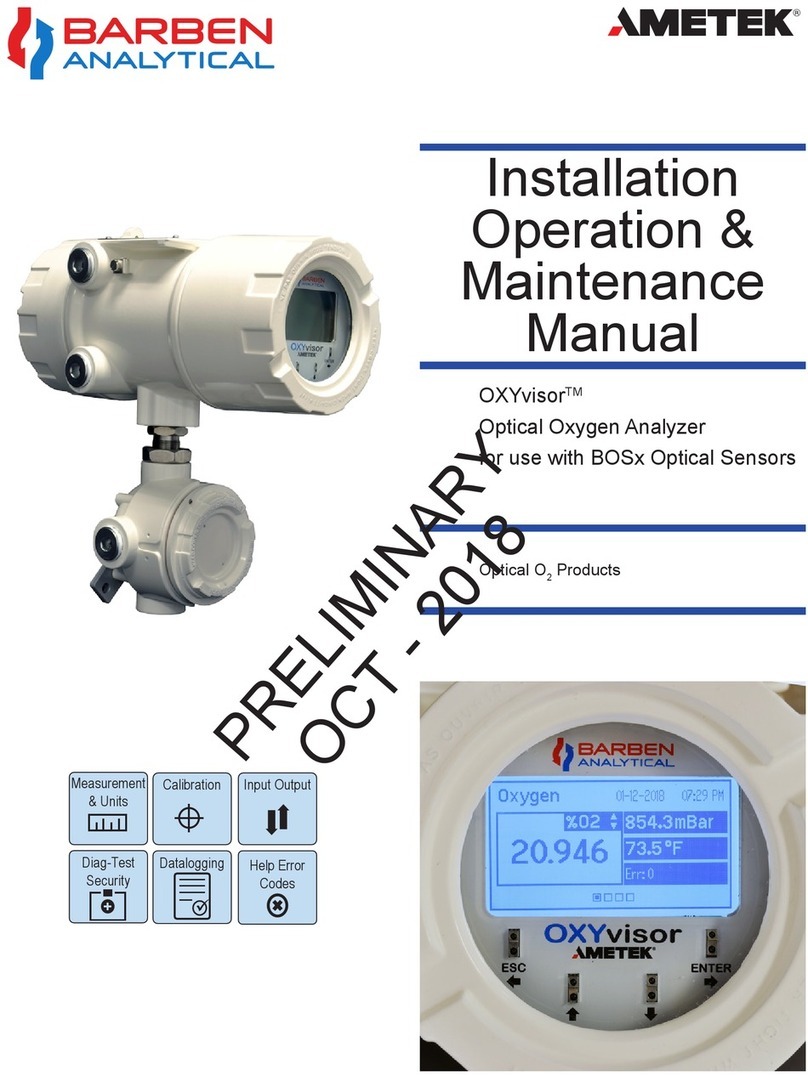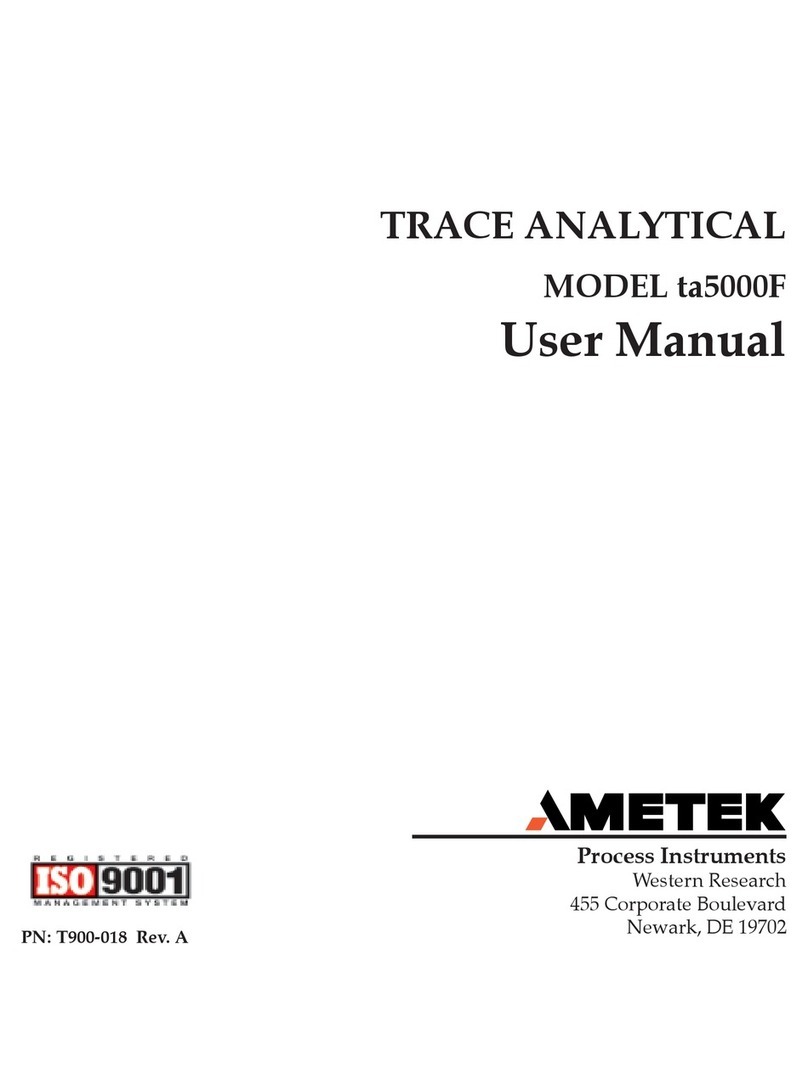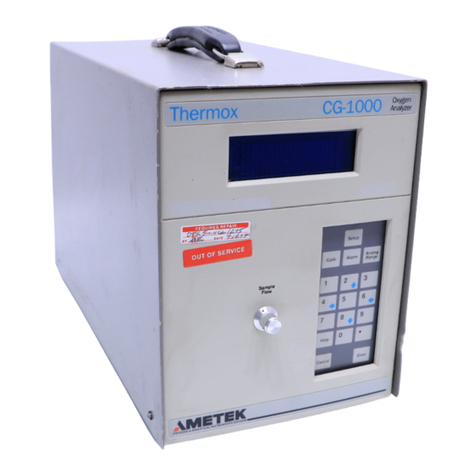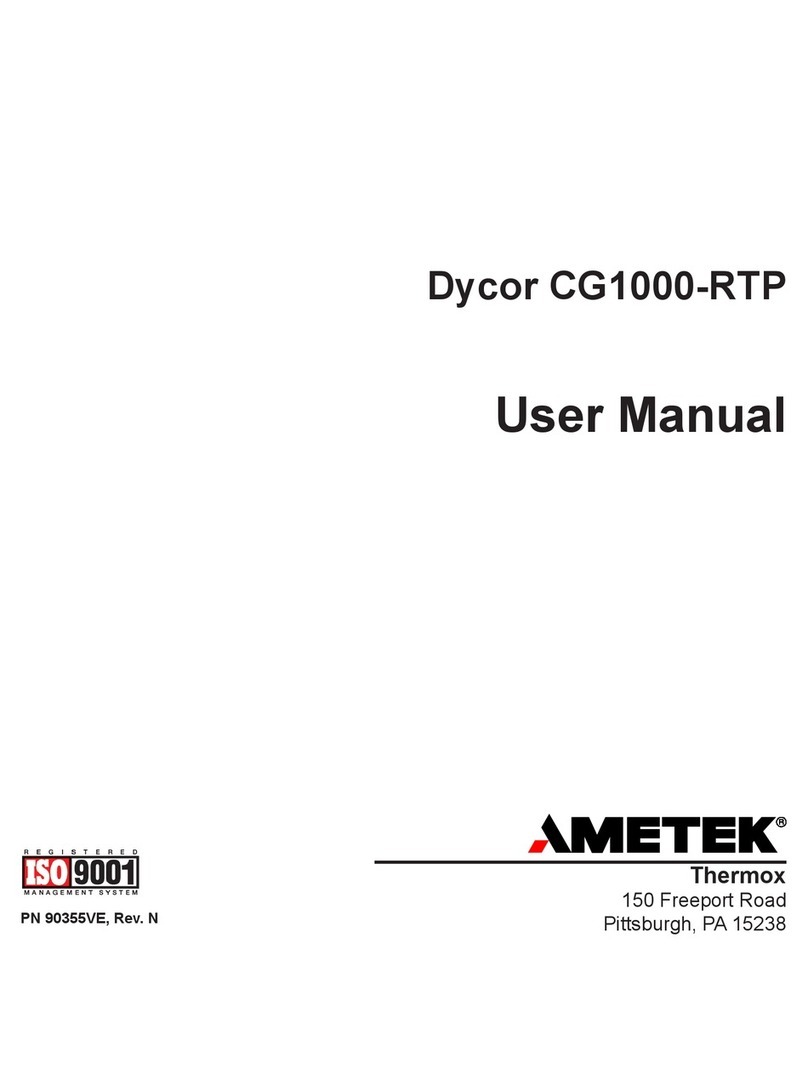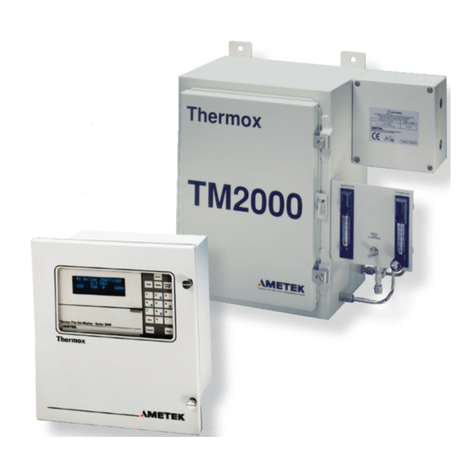
x | Dycor CG1100 OxygenAnalyzer
WARRANTY AND CLAIMS
We warrant that any equipment of our own manufacture or manufactured for us pursuant to our speci-
fications which shall not be, at the time of shipment thereof by or for us, free from defects in material
or workmanship under normal use and service will be repaired or replaced (at our option) by us free of
charge, provided that written notice of such defect is received by us within twelve (12) months from date
of shipment of portable analyzers or within eighteen (18) months from date of shipment or twelve (12)
months from date of installation of permanent equipment, whichever period is shorter. All equipment
requiring repair or replacement under the warranty shall be returned to us at our factory, or at such other
location as we may designate, transportation prepaid. Such returned equipment shall be examined by us
and if it is found to be defective as a result of defective materials or workmanship, it shall be repaired or
replaced as aforesaid. Our obligation does not include the cost of furnishing any labor in connection with
the installation of such repaired or replaced equipment or parts thereof, nor does it include the responsi-
bility or cost of transportation. In addition, instead of repairing or replacing the equipment returned to us
as aforesaid, we may, at our option, take back the defective equipment, and refund in full settlement the
purchase price thereof paid by Buyer.
Process photometric analyzers, process moisture analyzers, and sampling systems are warranted to
perform the intended measurement, only in the event that the customer has supplied, and AMETEK has
accepted, valid sample stream composition data, process conditions, and electrical area classification prior
to order acknowledgment. The photometric light sources are warranted for ninety (90) days from date of
shipment. Resale items warranty is limited to the transferable portion of the original equipment manu-
facturer’s warranty to AMETEK. If you are equipment from outside the United State, a statement should
appear on the documentation accompanying the equipment being returned declaring that the goods
being returned for repair are American goods, the name of the firm who purchased the goods, and the
shipment date.
The warranty shall not apply to any equipment (or part thereof) which has been tampered with or altered
after leaving our control or which has been replaced by anyone except us, or which has been subject to
misuse, neglect, abuse or improper use. Misuse or abuse of the equipment, or any part thereof, shall be
construed to include, but shall not be limited to, damage by negligence, accident, fire or force of the ele-
ments. Improper use or misapplications shall be construed to include improper or inadequate protection
against shock, vibration, high or low temperature, overpressure, excess voltage and the like, or operating
the equipment with or in a corrosive, explosive or combustible medium, unless the equipment is specifi-
cally designed for such service, or exposure to any other service or environment of greater severity than
that for which the equipment was designed.
The warranty does not apply to used or secondhand equipment nor extend to anyone other than the
original purchaser from us.
THIS WARRANTY IS GIVEN AND ACCEPTED IN LIEU OF ALL OTHER WARRANTIES, WHETHER
EXPRESS OR IMPLIED, INCLUDING WITHOUT LIMITATION AND WARRANTIES OF FITNESS OR
OF MERCHANTABILITY OTHER THAN AS EXPRESSLY SET FORTH HEREIN, AND OF ALL OTHER
OBLIGATIONS OR LIABILITIES ON OUR PART. IN NO EVENT SHALL WE BE LIABLE UNDER THIS
WARRANTY OR ANY OTHER PROVISION OF THIS AGREEMENT FOR ANY ANTICIPATED OR LOST
PROFITS, INCIDENTAL DAMAGES, CONSEQUENTIAL DAMAGES, TIME CHANGES OR ANY OTHER
LOSSES INCURRED BY THE ORIGINAL PURCHASER OR ANY THIRD PARTY IN CONNECTION
WITH THE PURCHASE, INSTALLATION, REPAIR OR OPERATION OF EQUIPMENT, OR ANY PART
THEREOF COVERED BY THIS WARRANTY OR OTHERWISE. WE MAKE NO WARRANTY, EXPRESS
OR IMPLIED, INCLUDING WITHOUT LIMITATION ANY WARRANTIES OF FITNESS OR OF MER-
CHANTABILITY, AS TO ANY OTHER MANUFACTURER’S EQUIPMENT, WHETHER SOLD SEPARATE-
LY OR IN CONJUNCTION WITH EQUIPMENT OF OUR MANUFACTURE. WE DO NOT AUTHORIZE
ANY REPRESENTATIVE OR OTHER PERSON TO ASSUME FOR US ANY LIABILITY IN CONNECTION
WITH EQUIPMENT, OR ANY PART THEREOF, COVERED BY THIS WARRANTY.
